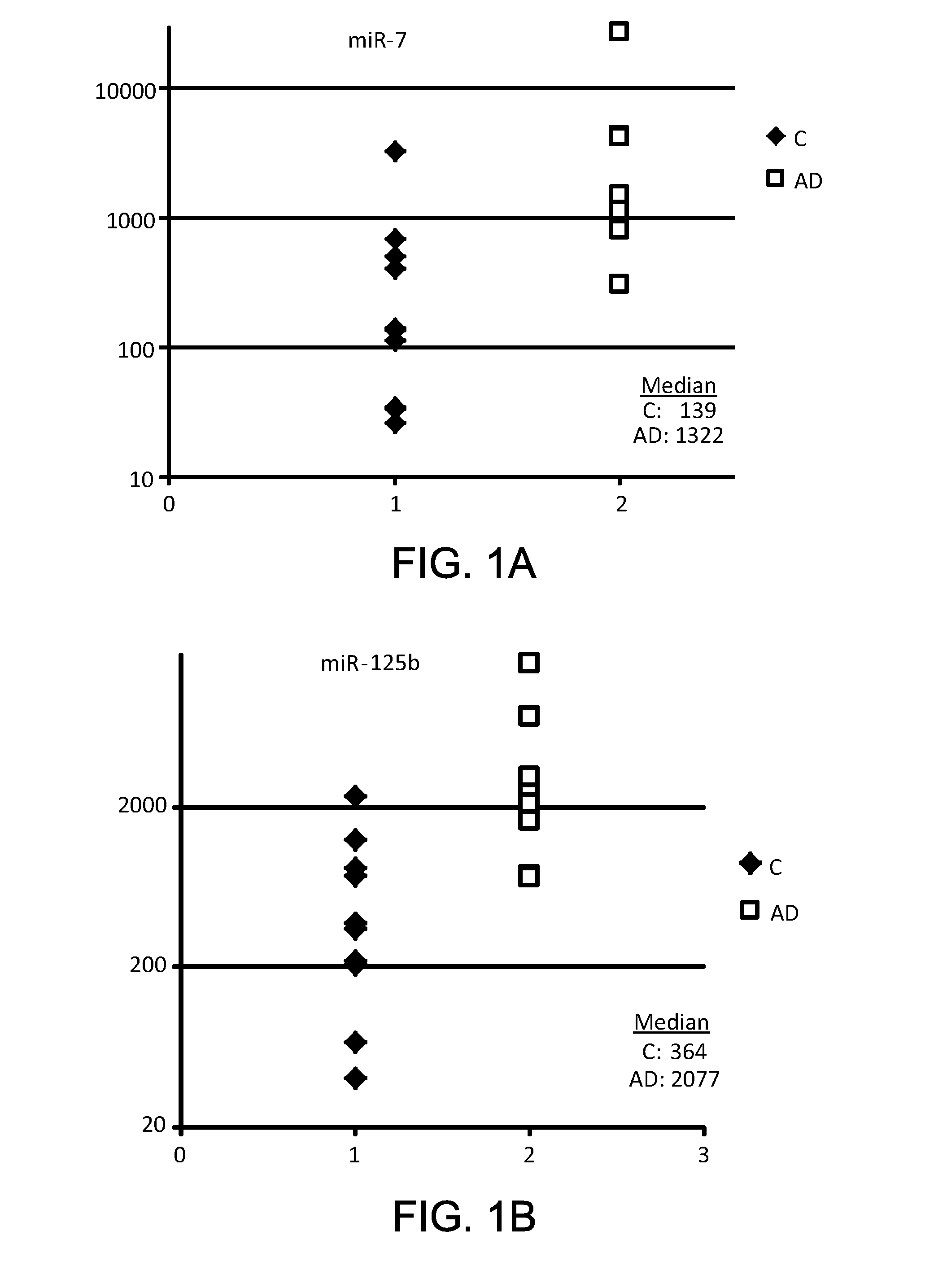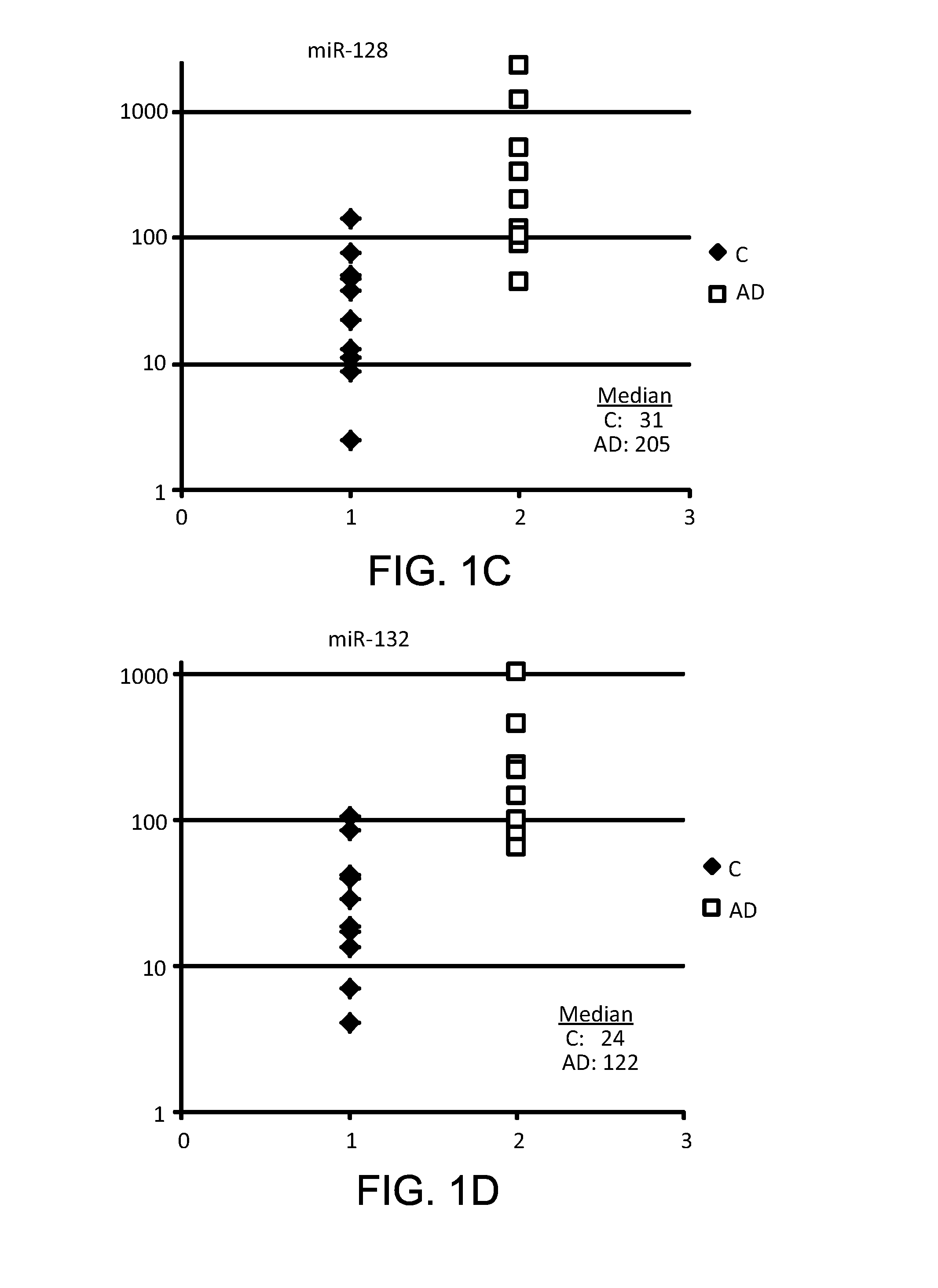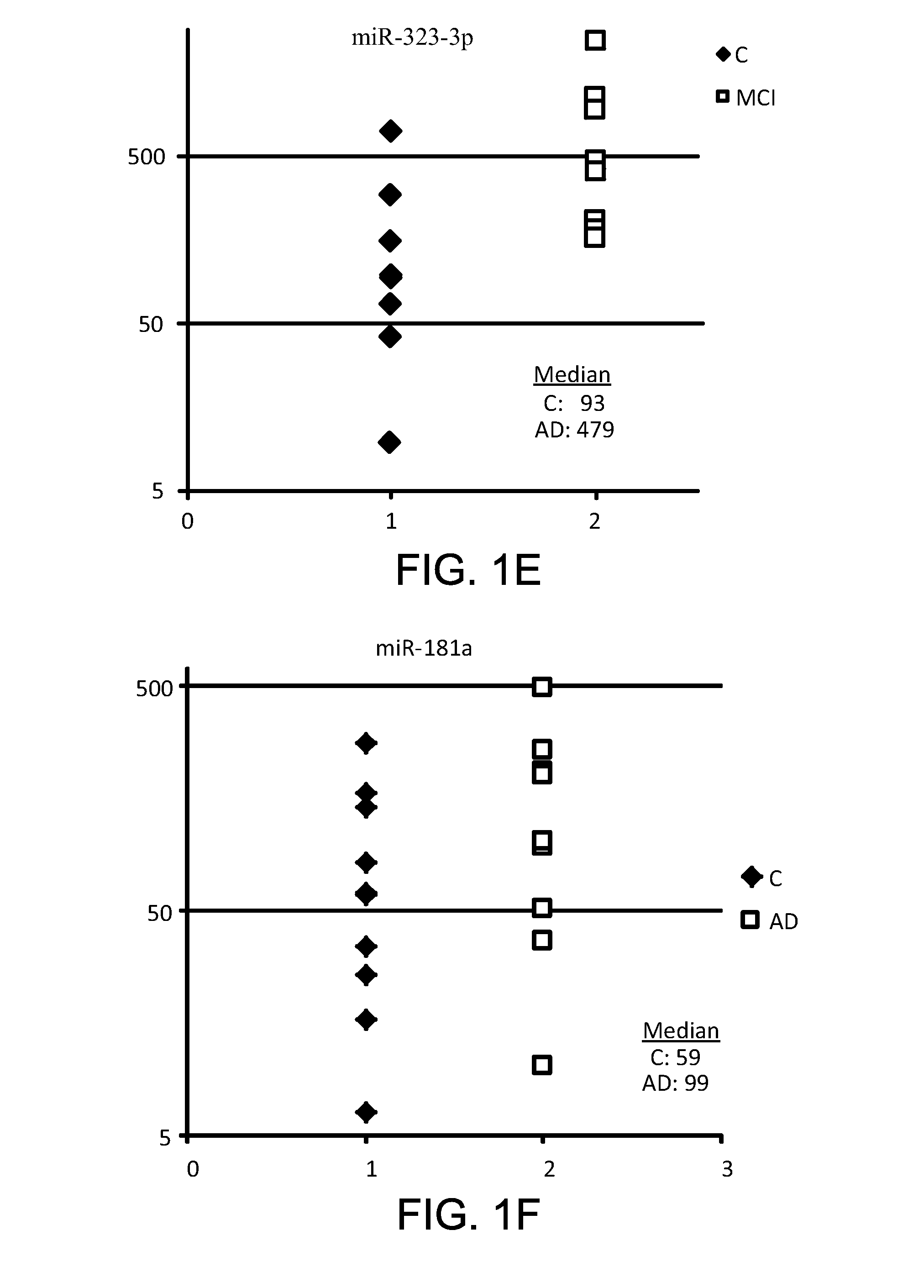Methods of using small RNA from bodily fluids for diagnosis and monitoring of neurodegenerative diseases
a neurodegenerative disease and bodily fluid technology, applied in the field of neurodegenerative diseases diagnosis and monitoring by using small rna from bodily fluids, can solve the problems of late clinical manifestation of disease symptoms, complicated drug development and successful treatment of ad and other neurodegenerative diseases, and complicated development of effective diagnostic methods, so as to improve the effectiveness of currently available treatments, increase clinical trial efficiency, and reduce costs
- Summary
- Abstract
- Description
- Claims
- Application Information
AI Technical Summary
Benefits of technology
Problems solved by technology
Method used
Image
Examples
example 1
Comparison of Different Methods Used for miRNA Purification from Serum or Plasma
[0102]Since most of the commercially available kits for miRNA isolation have been developed for miRNA purification from cells and tissues various kits are compared with in-house modifications to adjust them for miRNA isolation from serum or plasma. Commercial kits include the miRNeasy kit (Qiagen), the MirVana RNA isolation kit (Ambion / ABI), miRACLE (Agilent), High Pure miRNA isolation kit (Roche), and miRNA Purification kit (Norgen Biotek Corp.). Besides, the in-house techniques based on the use of Trizol (Invitrogen) are developed. In some experiments, miRNA is pre-adsorbed on anion-exchangers, such as Q-Sepharose, or on magnetic beads covered with a RNA-binding material (Q-Sepharose (GE Healthcare), PEI-polyethyleneimine, or other). After Trizol deproteinization, RNA is precipitated with isopropyl alcohol or additionally purified on silica columns. In some experiments, purified RNA is treated with RNA...
example 2
Selection of miRNA for Testing
[0104]Tested miRNAs were initially selected based on literature data on their enrichment in brain compartments and presence in neurites (i.e., axons and / or dendrites and / or spines) and / or synapses (Hua et al., BMC Genomics 2009, 10:214; Liang et al., BMC Genomics. 2007, 8:166; Landgraf et al., Cell. 2007, 129:1401-1414; Lee et al., RNA. 2008, 14:35-42; Schratt et al., Nature. 439:283-289, 2006; Lugli et al., J. Neurochem. 106:650-661, 2008; Bicker and Schratt, J Cell Mol Med., 12:1466-1476, 2008; Smalheiser and Lugli, Neuromolecular Med. 11:133-140, 2009; Rajasethupathy, Neuron. 63:714-716, 2009; Kye, RNA 13:1224-1234, 2007; Yu et al., Exp Cell Res. 314:2618-2633, 2008; Cougot, et al., J. Neurosci. 28:13793-13804, 2008; Kawahara, Brain Nerve. 60:1437-1444, 2008; Schratt G. Rev Neurosci. 2009; 10:842-849) as well as on their involvement in neurite- and synapse-associated processes (The miR-Ontology Data Base: available at the world wide web at ferrolab.d...
example 3
Detection of an Increase in Levels of Synapse and / or Neurite miRNA in Plasma of AD Patients
[0105]Plasma samples were obtained from patients diagnosed with developed AD by cognitive test and brain imaging. Profiles of several neuron-enriched miRNAs from plasma of these patients were analyzed using RT-PCR with primers and probes for each individual miRNA (ABI). The amount of RNA equivalent to 30 μL plasma were taken in each PCR reaction, and 1 / 15 of RT product was taken into final PCR. Thus, the amount of miRNA equivalent to 2 μL plasma was detected. The results were normalized per various miRNA, usually per ubiquitous miR-16, converted into Relative Quantity (RQ) of miRNA according the ABI protocol (2−Δct), and compared with miRNA profiles from age-matched controls. In addition, data obtained with neurite and / or synapse miRNA were compared with data obtained with neuronal body miRNA.
[0106]As shown in FIGS. 1A-G, the data obtained clearly demonstrate that concentrations of many neuron...
PUM
| Property | Measurement | Unit |
|---|---|---|
| time | aaaaa | aaaaa |
| time | aaaaa | aaaaa |
| distance | aaaaa | aaaaa |
Abstract
Description
Claims
Application Information
 Login to View More
Login to View More - R&D
- Intellectual Property
- Life Sciences
- Materials
- Tech Scout
- Unparalleled Data Quality
- Higher Quality Content
- 60% Fewer Hallucinations
Browse by: Latest US Patents, China's latest patents, Technical Efficacy Thesaurus, Application Domain, Technology Topic, Popular Technical Reports.
© 2025 PatSnap. All rights reserved.Legal|Privacy policy|Modern Slavery Act Transparency Statement|Sitemap|About US| Contact US: help@patsnap.com



